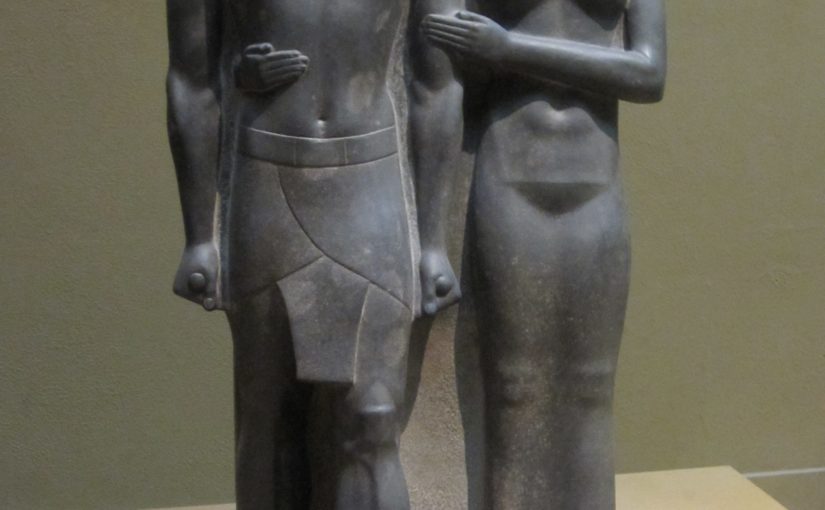In Unit 2 of the Art History course we have learned about and seen many artworks from the Ancient World. The Ancient World is comprised of several civilizations such as Mesopotamian, Egyptian, Greek and Roman societies each having their own different pieces of art work that has been viewed throughout the ages. However, these ancient civilizations may be different but they do share some similarities with one another through their art works.
Greek and Roman Art are statues and figures of young nude warrior men and how their physique and body is idealized and supposed to look like. However, Mesopotamian and Egyptian Art is different from the Greek and Roman Art because Mesopotamian and Egyptian Art are not statues and figures of muscular nude young men instead they have paintings and statues of pharaohs, their hierarchy system, and gods. The Greeks originally created their statues and works of art out of bronze using the lost wax technique so it could later on be melted down if necessary for weapons, tools, and etc. The Romans copied the Greeks works of art but instead of bronze the Romans made their statues out of marble which weighed much more. The Mesopotamian and Egyptian made statues but they were made out of stone and it was not as human compared to the Greeks and Romans, instead the statues were of Gods including human figures mixed with animal parts or pharaohs in loin cloth and fake beards.
Greek and Roman Art and Mesopotamian and Egyptian Art have several similarities and differences. Some examples of Greek and Roman Art is Kouros which represents the ideal physically fit male warrior of the time and later on changes into a more tone, smooth and better looking figure with a difference in hair and stance otherwise known as Doryphoros. Unlike the Greek And Romans, Mesopotamian and Egyptian art portrays figures like Anubis and the Sphinx which are part human and part animal figures, Anubis has the head of a jackal and the body of a man and is the god of the dead. The Sphinx has the head of a human and a body of a lion. Mesopotamian and Egyptian Art also show the hierarchy and the social status with the pharaoh shown to be the biggest and on the top while accompanied by his followers who are of similar or smaller size and the slaves which are the smallest and the lowest of the hierarchy in the pieces of art.
The cultures of the Mesopotamian, Egyptian, Greek, and Roman civilizations were similar due to the way they worship gods and rulers through some of their art works. The artworks reflects the society of the ancient civilizations and shows how they might have been culturally as people. Mesopotamian and Egyptians also portrayed their society through ceramics and stone showing others how the ruler is the highest and the slaves and people were the lowest and also depicts how the ruler is the biggest while the others are smaller. Greek and Roman also portray this among their culture by creating six foot plus tall statues of athletic men even though they were not as tall. This shows how both cultures liked to show their hierarchy and civilizations through their art works to be passed down from generation to generation even though some of these pieces have been through a lot due to the ravages of time it still remains to show how these civilizations strive.


